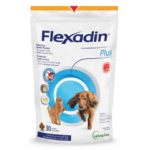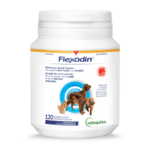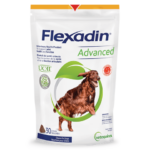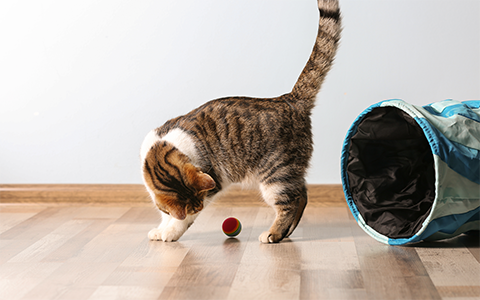Aging is inevitable, for us and for our pets. The effects of aging vary considerably and affect different pets in different ways, depending on such factors as breed, weight, stress, and nutrition. As your pet ages, he or she will develop behaviors that most of us associate with the normal aging process, such as a abnormal gait, reduced activity and energy, and unresponsiveness to commands.
We need to bear in mind that aging isn’t a disease per se, but older pets are more likely to develop certain problems. So it’s important to pay attention to small changes in your senior pet: they can often point to more serious underlying conditions. The good news is that most conditions can be successfully treated or managed if they’re caught early.
Osteoarthritis
Osteoarthritis is very common, occurring in 45% of dogs aged 8 to 12 and in 90% of cats over the age of 12, although it can occur earlier. Osteoarthritis is caused by the breakdown of joint cartilage (wear and tear). Cartilage loss can result in pain and inflammation that lead to clinical signs.
Over time, the pain and inflammation can become severe enough to cause limping. Initially, however, the signs of osteoarthritis can be subtle and misinterpreted as part of the normal aging process. Your cat may pay less attention to grooming. Your dog may have less endurance for walking or running.
Very often, stiffness when changing position and reduced overall mobility are signs that your pet is developing osteoarthritis. His or her temperament can be affected, too. By watching for these signs, you can help your vet to manage your pet’s health through medication and dietary changes. Your vet may, for instance, recommend supplements (such as Flexadin) to support your dog or cat’s health and joint function.
Obesity
Metabolism slows as the body ages, since it doesn’t need as much energy to function normally. That’s why senior pets tend to put on weight if they are fed the same diet they had as young adults. Preventing obesity can therefore prevent all sorts of other health problems.
Immune System
As the body ages, the immune system, which protects against infection, may become less effective. As a result, older dogs and cats can become more vulnerable to infection. Preventive care (vaccination; parasite prevention program; diet; and dental, ear, and coat hygiene) plays a major role in maintaining your pet’s overall health.
Breed
While aging affects every pet differently, some breeds and species are more likely to develop specific diseases. Some examples are kidney failure and hyperthyroidism in cats, cancer in boxers, heart disease in small dogs, and glaucoma in poodles and English Cocker Spaniels. Regular blood tests are recommended for high-quality follow-up since they provide valuable information about your pet’s liver, kidney, and gland function that wouldn’t otherwise be available.
Cognitive Dysfunction Syndrome
Cognitive dysfunction syndrome (CDS) is a chronic, degenerative condition involving brain neurons. Affected pets may experience disorientation, learning deficits (such as self-grooming), and changes in social interaction, level of activity, and sleep cycle.
See your vet as soon as you notice these signs, so he or she can try to slow the progression of CDS as much as possible. Treatment options include managing related medical conditions, mental stimulation through changes to environment and behavior, pharmacological support when necessary, and dietary improvement with the addition of antioxidants such as SAMe (Zentonyl).
In short, don’t hesitate to look closely into the causes of small changes in your pet. Even more importantly, regular check-ups with your vet as your pet ages can help spot illnesses early on and give your pet as long a life as possible.










